How to decide What needle to use for hand embroidery? Hand embroidery is a beautiful art that required very less materials to start with. It is an inexpensive craft to take up because unlike other crafts, the basic tools required for embroidery are very simple and affordable. You just need fabric, floss and needle to start embroidery. You can embroider without scissors or hoops but you cannot embroidery without a needle. Needles are very essential for hand embroidery.
So, what needle to use for hand embroidery? Basically selection of the needle depends upon the style of hand embroidery you want to try or a type of fabric or floss you are using for an embroidery project. There are a variety of needle types you can choose from. Also, you need to check the characteristics of the needle before starting the embroidery project.
The selection of needle is an important task, the same as we carefully select the fabric or floss for embroidery. Here you will find different types of needles and also various characteristics of needles.
I am in love with hand embroidery from childhood as my grandmother was an amazing embroider. she uses to create the magic with various color threads and can turn a plain simple cloth into a masterpiece. When I was young she uses to teach me hand embroidery, since then embroidery has a very special place in my life.
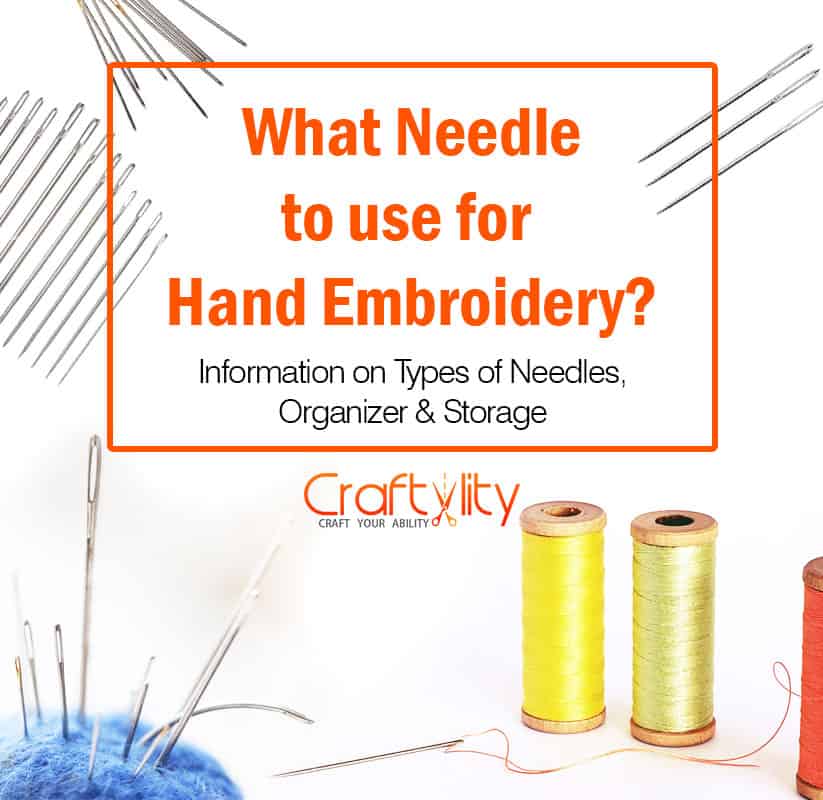
Table of Contents
What needle to use for hand embroidery?
There are many types of needle available, the type of needle depends upon what kind of hand embroidery you are planning to do. Selecting the right needle for embroidery is important basically, select the needle that will accommodate the fabric and thread you wish to use for the project.
If you are working with a too-large needle it can create a visible hole in the fabric or if you are using a too fine needle then there are chances that thread gets rubbed each time it passes through the fabric. Each type of Needles has their designated numbers. Bigger the number, finer the needle and lower the number, thicker or larger the needle.
There are many types of hand embroidery needles, the following are my list of types of hand embroidery needles and their use. This should help you to pick the right needle for your project.
1. Embroidery Needle / Crewel Needle
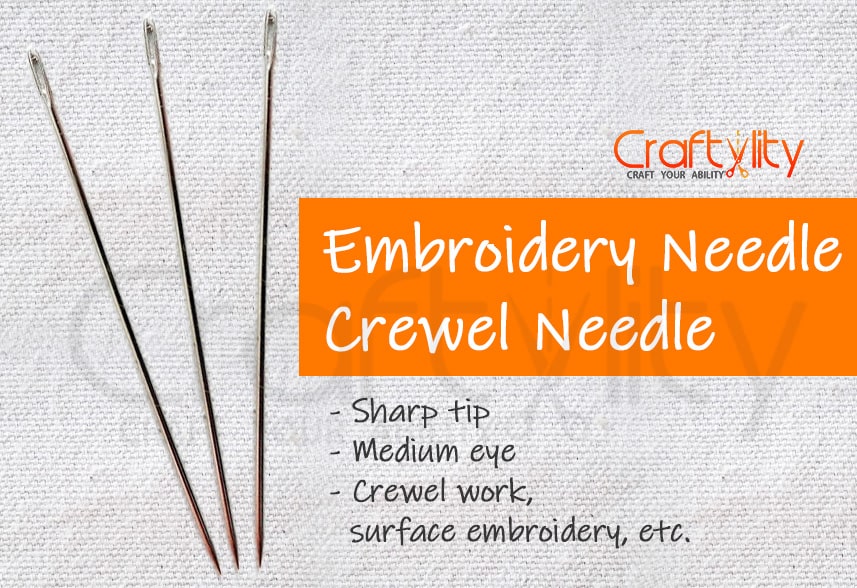
Embroidery needles are commonly used for embroidery. They have sharp tips with long narrow eyes and medium height. They are generally used for any type of embroidery technique that requires a sharp tip, like crewel work, whitework, surface embroidery, etc. Embroidery needles sizes come from 1 to 12, 1 is largest or thickest and 12 is finest.
The sharp tip helps in piercing tightly woven fabrics. Their eye is slightly longer which accommodates embroidery threads. They are good for the people who have difficulty seeing the eye of the needle.
2. Tapestry Needle
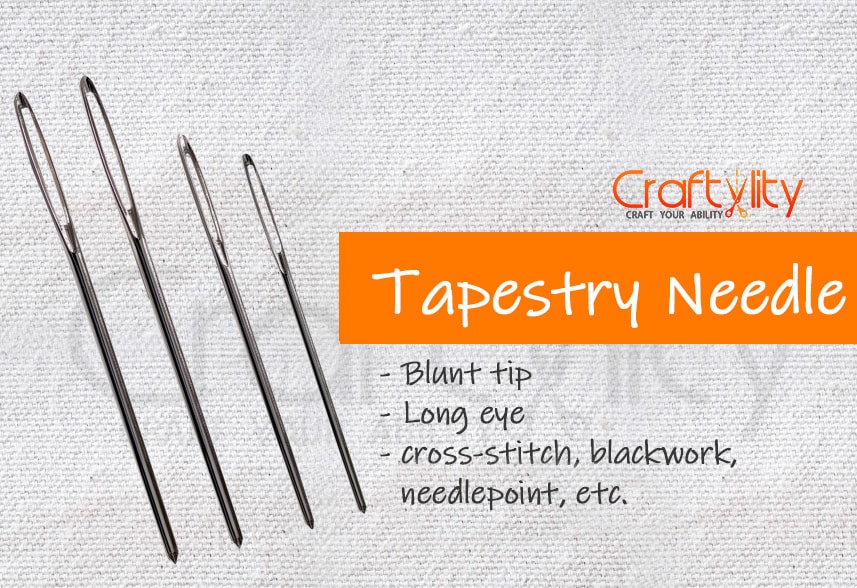
Tapestry needle has a blunt tip, long eye and the shaft is slightly thinner then eye. They are often called as ball-pointed needles and are used for cross-stitch, blackwork, and needlepoint. Basically it is used when needle needs to pass through the threads of cloth rather than piercing the fabric.
Tapestry needles come in sizes from 13 to 28, 28 is finest and 13 is the largest needle size.
The tip of the needle is blunt hence it can be used for whipping or lacing embroidery stitches. These stitches are constructed on stiched which are already worked on the base fabric. It does not involve piercing the fabric.
3. Chenille Needle
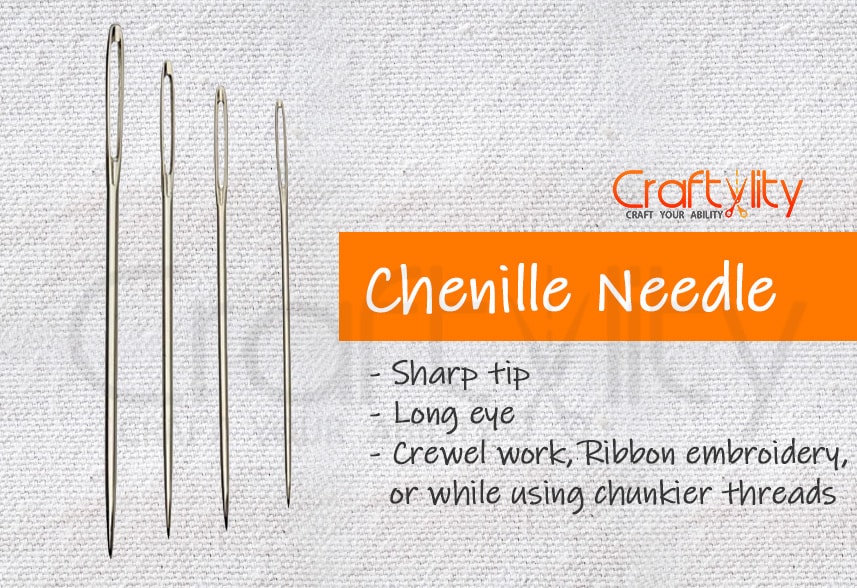
Chenille needles have a sharp tip, long eye, and the shaft is slightly thinner than the eye. These needles are similar to embroidery needles. They are stronger in length and wider in width than standard crewel needle.
Chenille needles come in sizes from 13 to 28 like tapestry needles.
These needles are ideal for working with wool thread, used for crewel work, ribbon embroidery, or project using chunkier threads.
4. Darners Needle
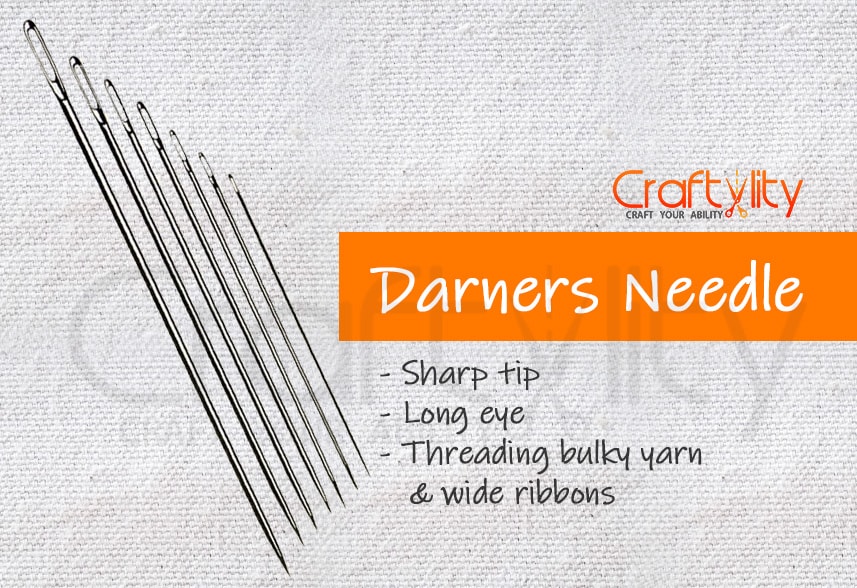
Darner needles are long needles with long eyes. These needles are suitable for threading bulky yarn and wide ribbons. The tip of the needle is slightly curved, making it easier to pick up stitches. These long sturdy needles have very sharp points.
These needles are suitable for doll making and darning.
5. Quilting Needle
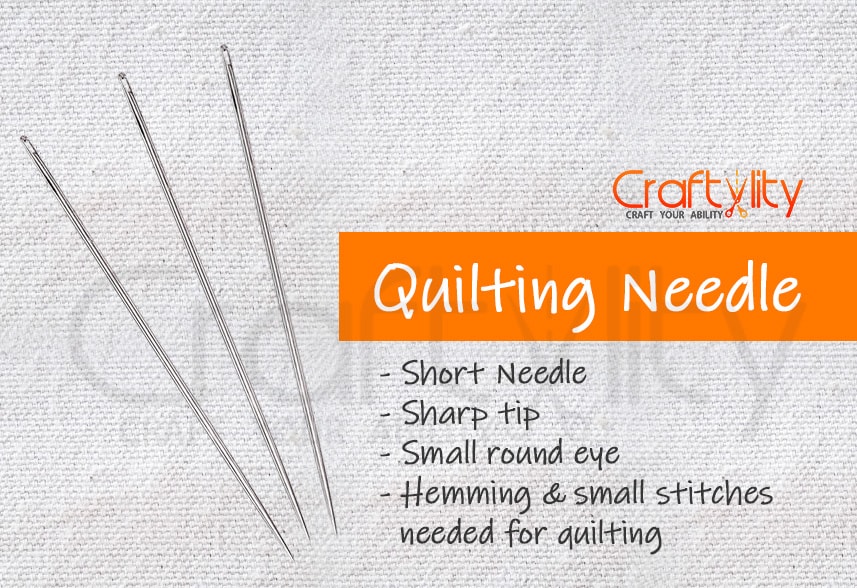
Quilting needles are very short, sharp and narrow and have a small round eye. As the name suggests these needles are specially used for quilting. The art of quilting involves detailed work to sew the layer of the quilt. These needles are the best choice for hand quilting. They are short and allows the quilter to create quick and even stitching.
Quilting needles come in size range from 3 to 12.
6. Beading Needle
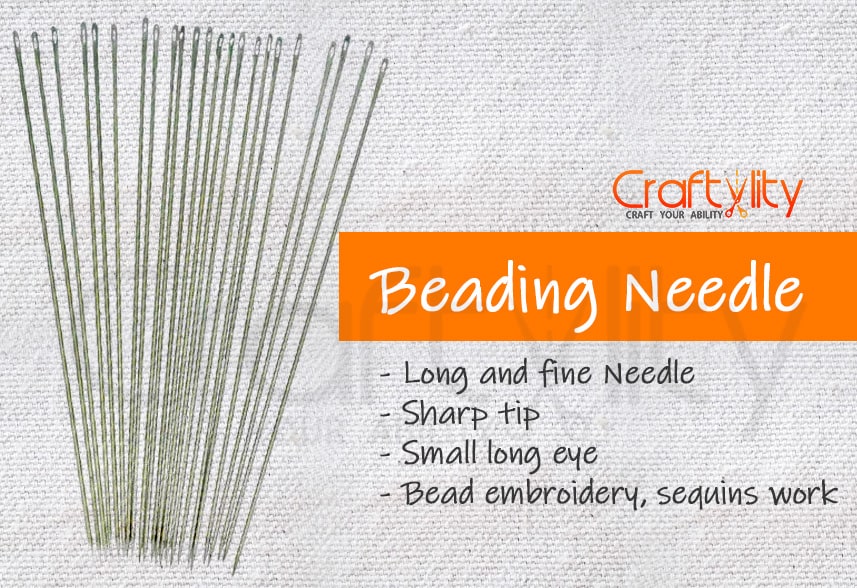
Beading needles are very fine, long, have very small, long eyes and a sharp point. These needles are very thin and fine enough to go through the hole of small beads and are long enough to thread many beads on them. These needles tend to bend easily.
Beading needles come in size range from 10 to 15.
These needles are used to string the beads in bead embroidery. These needles are also used to attach sequins on embroidery.
7. Straw Needle
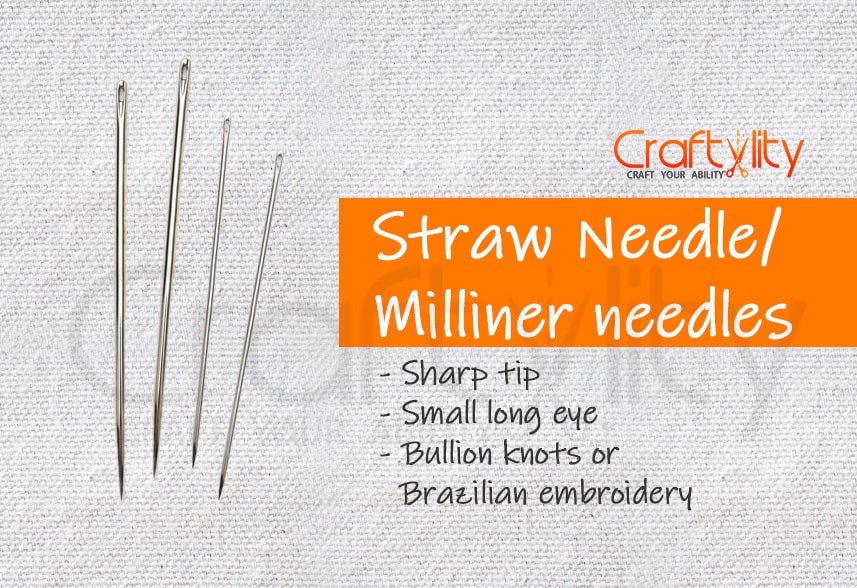
Straw needles are also called as Milliner needles. These needles have a small round eye, sharp tip and shaft have the same thickness as the eye. Its eye does not bulge out at the top portion of the needle. These needles are longer as compared to other needles.
Straw needle size comes in sizes from 1 to 10 and also comes in 15 and 18. 10 is finest and 1 is larger needle size, 15 is larger than 18, and 18 is larger than size 1.
These needles are ideal for many types of stitches in which thread is wrapped around the needle several times and the needles need to pass through the wraps like bullion knots or Brazilian embroidery. They are also used for creating fancy stitching and pleating commonly known as smocking.
8. Curved Needle

Curved needles are also called as upholstery needles. Curved needles have a medium-long eye. These needles are very handy for finishing techniques, as they are curved and can easily pass through the areas where straight needles find difficult to pass through. These needles are great for difficult tasks, like sewing fabric boxes together, securing threads, etc.
These needles come in few sizes, most fine embroidery thread is a size 10 curved beading needle.
Tips to help you to decide which needle size to use:
- While selecting the needle consider the type of fabric, type of thread, and type of embroidery work you are planning to do.
- The needle should slide effortlessly through the fabric, not tearing the fabric or damaging it.
- Whichever type of needle you use for embroidery projects it is important that it should be straight.
- The needle should not be too thick, which can create a visible hole in fabric while passing through it.
- The tip of the needle should not be damaged, just imagine a damaged tip will not pass the fabric easily and if it passes the fabric it can damage the fabric thread while passing even it can tear the thread of fabric.
- The eye of the needle should not leave visible space around the thread. It should be large enough for the thread to pass through, but not too larger.
You can also check out: What is the best fabric for hand embroidery?
Looking after embroidery needles:
Taking care of the needle is equally important, thus you can maintain the tip of the needle, and also you can keep the needles intact and secure.
Needle organizer:
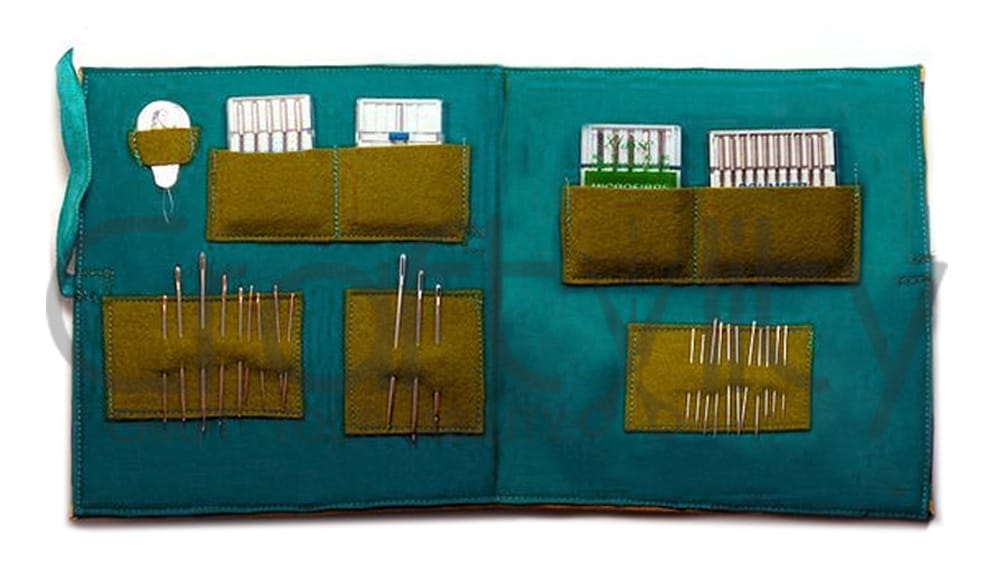
A needle organizer is the best way to store needles. You can purchase the needle organizer which is available in the market or you can also make your own needle organizers.
- You can use a box and place a piece of felt in it and arrange the needles in that felt cloth.
- You can place a sheet of a thin magnet in a box and thus all needles can be properly stored. A magnet will hold the needle and needles will never be spilled.
- You can create a folded felt folder and storage needle in that.
Needle threader:
Sometimes it gets really frustrated to thread a needle, especially a needle with small eyes. In this case, a needle threader is really helpful to insert the thread in the needle’s eye. A needle threader is really easy to use and with its help, you can insert the thread in needle quickly.
There is no trick or rule to follow while selecting the right needle for your project. It is generally the type of embroidery, type of fabric, and floss you are planning to use.

